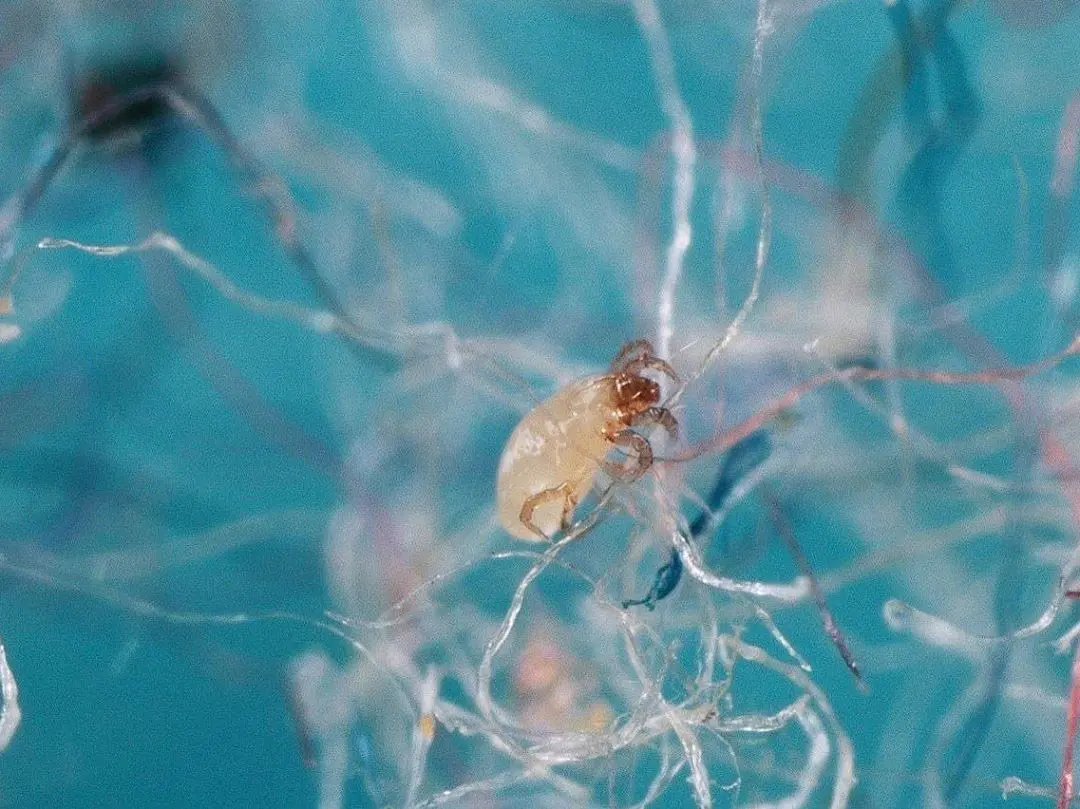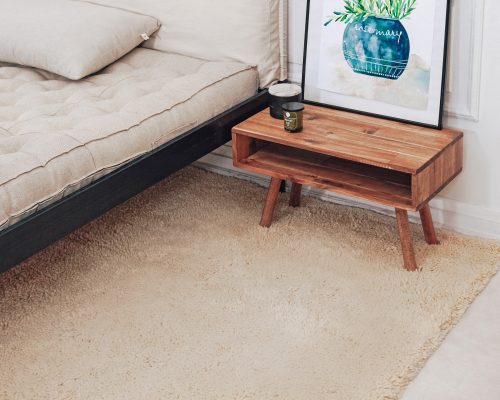
Over the last years, we have answered thousands of questions and addressed hundreds of concerns about wool and natural wool products. We have come up with a list of the five most common misconceptions & myths about wool and natural wool bedding.
Myth #1: Wool is not suitable for warm weather.
One of the most common myths about wool is that it is not suitable for warmer weather. We often get questions about whether a wool mattress, a wool pillow, or a wool topper would be OK for countries with warmer climates. We may assure you that wool is a four-seasons affair.
Wool regulates your body temperature like no other material. It keeps your body temperature optimal no matter what the outside temperature is. Wool keeps you warm in the winter and cool in the summer. Wool absorbs perspiration and lets it all out through its breathable fibers, keeping a constant layer of dry air next to your skin. Always! No matter whether it is hot or cold outside. Wool is the optimal material to help you keep a comfortable and healthy sleep temperature.
People often worry that wool will make them sweat. In fact, due to its high breathability and wicking qualities, wool releases moisture into the air really efficiently, thus keeping you dry throughout the night, unlike some other natural or synthetic options. Rest assured that you will forget about those sweaty nights.
Myth #2: Wool bedding is not for me because I’m sensitive/ allergic to wool?
When you think of wool you may associate it with itchiness. We’ve all had those itchy wool sweaters. That is not always the case, however.
Even if your skin is on the sensitive side, when it comes to wool bedding, you will not really be exposed to the wool fibers themselves. Yes, the fibers of the wool are a bit coarse, but the mattress has its ticking on. Then you will most probably have a mattress protector, and finally the sheets. The same thing goes for wool duvets and wool pillows.
Adding to the myths about wool, there is also the common misconception that wool is an allergen. Many people who cannot stand wool sweaters for example might think that they are allergic to wool. Studies show that all fibers, not only wool, can provoke a prickly sensation on the skin if the fiber end is coarser. That is more often than not just a physical skin irritation, not an allergy. It is that irritation that may even cause redness on your skin where it’s been in contact with wool clothing.
Scientific studies also show that irritation is usually caused by some of the chemical finishes used on wool garments, such as formaldehyde and chrome. The best way to avoid it is to make sure you know what’s been used in the products you buy.
Myth #3: Wool smells like sheep!
This is one of those fishy myths about wool! Well, once you receive your wool creation it might have a slight odor. It will not smell like sheep but rather like a hay barn. Some of our customers describe it as а “a faint smell of a clean, healthy, warm barn that dissipated quickly and had such a healthy and loving feel to it.”

Our wool is completely natural and has not been washed with chemicals to remove its natural coating of lanolin, which is the one giving it the smell but also the multitude of magical benefits. So there will be a subtle odor but this usually airs out in a week or so. To help items air out better, air your room frequently.
In other words – do not worry about the slight scent at the beginning. It is actually proof that the wool in your piece is as natural and pure as possible. It means that it has not been treated with any chemicals, including aggressive soaps that remove the natural lanolin coating.
Myth #4: Wool may bring bugs in the house.
Wool & Moths
Many people believe that wool brings moths, which is not the case. Our wool comes washed and it has no insects in it. So if there is not an active moth infestation in your home, your Home of Wool mattresses and wool items will be safe. But, since they are completely natural and free of chemicals and finishes, if you have moths, there is a chance that they will infest the wool as well.
One thing to keep in mind – wool moths are different from food moths. Having moths in your jar of rice will not affect your wool pieces in any way. But if you have wool moths or carpet beetles in your home it is highly advisable to first get rid of them before getting a wool item.
Wool & Dust Mites
If there is one thing that dust mites just cannot stand it is wool. Wool is naturally dust mite repellent. It is the lanolin and the structure of the wool fibers that repel the dust mites, but there is more to it as well.
Dust mites are microscopic creatures that survive and thrive on dead human skin flakes. They love dark, moist, and warm places. The optimal temperature for them to feast in is anywhere between 66°F to 86°F. The places in your home with a humidity level between 75% and 80% will feel like heaven to dust mites. No wonder they are found mostly in our sacred place: the bed. They just love mattresses and pillows.

Тhis is where wool’s ability to wick away moisture and create a dry and cool environment comes into play. That is one of the reasons that you won’t have a dust mites colony in wool bedding, unlike in polyester bedding.
Actually, there is quite a lot of research done on polyester and dust mites and according to one published in the British Medical Journal, there is a strong correlation and causality between allergic dust mite reactions and synthetic bedding. According to the study people with asthma are more likely to be exposed to allergic reactions from dust mites if they sleep on a synthetic pillow. It is the non-breathable fabrics that are the best shelter options for dust mites, keeping in the warmth and moisture they need to thrive.
Myth #5: Wool shearing is cruel.
Sheep breeding and wool shearing are traditional ways of making a living in Bulgarian villages. Besides wool, most of the sheep in Bulgarian herds are used for milk as well.
Our wool is collected from individual owners and small farms in Bulgaria. These owners treat their animals with great respect and care for them like family members so that they can have their wool and milk for many years.

Wool shеaring is not a cruel act. If done by professional shearers no sheep is being harmed during the process.
There are many common misconceptions about the cruelty-free issue with wool shearing with some even claiming that wool is as cruel as fur. We have stumbled upon individual videos and photos depicting acts of terror upon sheep and other animals. And while there are heartless cruel people in the world, many of these are taken in fur farms or they are just individual cases that cannot speak up for the entire sheep farm community.
That myth has been debunked many times by experts and flock owners claiming that for the majority of modern sheep it is actually cruel not to shear them since domestic sheep do not shed and evolutionary they have become dependent on humans for shedding. If not sheared the wool would just keep on growing and an excess of wool would actually be too risky and hazardous for the sheep, resulting in overheat during the summer or immobility in the long term.
We, at Home of Wool, are strongly against any kind of violence or cruelty towards animals and we make sure that our wool is sourced through ethical practices so that we can sleep in peace as well.

Two Bonus Myths Busted
Myth #6: Wool Is High-Maintenance
Many people believe that wool requires a lot of maintenance, but that’s simply not true. Wool is naturally resistant to odors and stains, making it easy to keep clean. Using the appropriate detergent and washing cycle, you can machine-wash and air-dry it without any problems.
Wool fibers are naturally durable and resilient and can withstand daily wear and tear without losing their unique shape or support. Thanks to its natural resistance to mildew, wool doesn’t require frequent washing or cleaning. You can air it out, and it will stay fresh and clean for a long time.
If you’re looking for a bedding or mattress option that’s both comfortable and easy to maintain, wool is the right choice. Don’t let the myth of wool being high-maintenance hold you back from enjoying its many benefits.
Myth #7: Wool Is Not Environment Friendly
Wool is a renewable resource as sheep can produce wool year after year, making it sustainable and eco-friendly. Unlike synthetic materials, which can take hundreds of years to break down in landfills, wool is biodegradable and won’t harm the environment.
The production of wool has a relatively low environmental impact and requires little water or energy. There are no dangerous chemicals or pollutants that can harm the environment. Many manufacturers are committed to sustainability practices. They use ethical and environmentally responsible production methods, such as sourcing wool from local farmers.
If you’ve been hesitant to try wool bedding or a wool mattress due to concerns about its environmental impact, rest assured that wool is a great choice. Not only is it a renewable and sustainable resource, but it is also produced with relatively low environmental impact.
These are some common myths about wool we’ve encountered. If you have any other questions or concerns do not hesitate to drop us a line. We would love to help you learn more about wool!




Leave a Reply